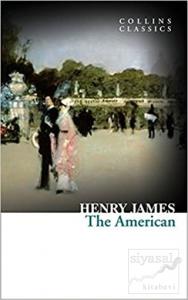
“You wanted to look at life for yourself−but you were not allowed; you were punished for your wish. You were ground in the very mill of the conventional.” –from The Portrait of a Lady
The Portrait of a Lady, Henry James' most famous masterpiece in which he utilized his polished and elegant prose, was first published as a serial, later as a book in 1881 and introduced one of the most memorable characters in the American literature.
The Portrait of a Lady tells the story of Isabel Archer, a high-spirited young American, who desires nothing but independence, but “affronts her destiny” and finds it overwhelming.
In this novel, Henry James reflects his ongoing interest in the differences between the New World and the Old, by using his favorite theme, an American abroad, along with other themes like personal freedom, betrayal and responsibility and depicting a world that seems charming but proves afterwards to be plagued with deceit and suffering.
“You wanted to look at life for yourself−but you were not allowed; you were punished for your wish. You were ground in the very mill of the conventional.” –from The Portrait of a Lady
The Portrait of a Lady, Henry James' most famous masterpiece in which he utilized his polished and elegant prose, was first published as a serial, later as a book in 1881 and introduced one of the most memorable characters in the American literature.
The Portrait of a Lady tells the story of Isabel Archer, a high-spirited young American, who desires nothing but independence, but “affronts her destiny” and finds it overwhelming.
In this novel, Henry James reflects his ongoing interest in the differences between the New World and the Old, by using his favorite theme, an American abroad, along with other themes like personal freedom, betrayal and responsibility and depicting a world that seems charming but proves afterwards to be plagued with deceit and suffering.






























